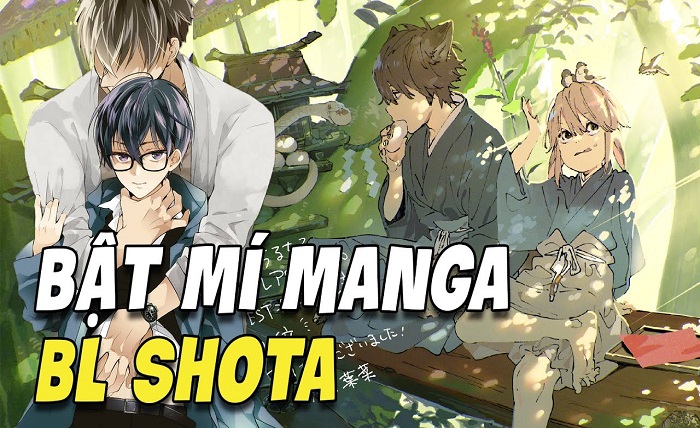Shota: A Controversial Term in Anime and Manga Culture

Shota is a term that has different meanings and connotations depending on the context and the audience. In this blog post, we will explore the origin, usage, and implications of this term in various media and fan cultures.
What does shota mean?
Shota is a shortened form of shotacon, which itself is a portmanteau of Shōtarō complex. Shōtarō is a common name for young boys in Japan, and complex refers to a psychological fixation or attraction
Shotacon, in Japanese contexts, is the attraction to young or young-looking boy characters, or media centered around this attraction. The term can describe either the person who feels this attraction or the attraction itself
Shotacon can also refer to a genre of manga and anime in which prepubescent or pubescent male characters are depicted in a suggestive or erotic manner, either with other male characters (usually in a homoerotic way) or with female characters (usually in a heterosexual way)
In some cases, shotacon can also apply to post-pubescent (adolescent or adult) characters with neotenic features that would make them appear to be younger than they are
Outside of Japan, shota is usually used to refer to the genre of manga and anime that features young boy characters in sexual or suggestive situations, rather than the attraction itself. Shota is often considered a subgenre of yaoi (boys’ love) or lolicon (girls’ love), depending on the gender of the other partner
Where did shota come from?
The term shotacon is derived from the name of the young male protagonist Shōtarō from the classic manga and anime series Tetsujin 28-go (also known as Gigantor in English). Shōtarō was one of the first popular child heroes in Japanese media, and his name became synonymous with young boys in general
The term shotacon was coined by manga artist Junichi Matsuura in the 1980s, who used it to describe his own works that featured young boy characters in erotic scenarios. Matsuura was influenced by earlier works such as Lolita by Vladimir Nabokov and The Catcher in the Rye by J.D. Salinger, which explored the themes of adolescence and sexuality
Shotacon became more widespread in the 1990s, with the emergence of specialized magazines, fan clubs, and websites dedicated to this genre. Shotacon also gained popularity among female fans, who enjoyed the cute and innocent appearance of the boy characters and their contrast with the adult or dominant partners
Shota has also been influenced by other genres and trends in manga and anime culture, such as kawaii (cuteness), moe (aesthetic appeal), and otaku (fandom). Shota characters are often designed to elicit protective feelings or identification from the readers or viewers, who may see them as idealized versions of themselves or their partners
Why is shota controversial?
Shota is a controversial term because it involves the depiction of minors or minor-like characters in sexual or suggestive situations, which may be considered as child pornography or pedophilia by some people. Shota may also be seen as promoting harmful stereotypes or fantasies about young boys and their sexuality
Shota is illegal in some countries, such as Canada, Australia, and the United Kingdom, where it falls under the definition of child pornography. In these countries, possessing, producing, distributing, or accessing shota material can result in criminal charges and penalties
Shota is also subject to censorship or regulation in other countries, such as Japan, where it is legal but restricted by various laws and guidelines. For example, shota material must be labeled as adult-only and cannot be sold to minors. Shota material must also avoid showing explicit genitalia or sexual acts, and must use fictional settings or characters that are clearly not based on real people
Shota is also controversial among fans and creators of manga and anime, who may have different opinions on the artistic value, ethical implications, and social impact of this genre. Some fans and creators may defend shota as a form of creative expression, fantasy fulfillment, or harmless entertainment that does not harm anyone in reality. Others may criticize shota as a form of exploitation, abuse, or degradation that harms the dignity and rights of children and adolescents
How is shota used today?
Shota is still a popular term and genre among manga and anime fans around the world, especially online. Shota material can be found on various websites, forums, blogs, and social media platforms, where fans can share, discuss, or create their own shota works. Shota material can also be found in some physical media, such as magazines, books, DVDs, or games, although they are usually limited to adult-only stores or venues.
Shota is also used as a slang word or a nickname for young boys or boyish-looking people, either in a positive or negative way. For example, some people may use shota as a term of endearment or admiration for someone who is cute, innocent, or charming. Others may use shota as a term of insult or mockery for someone who is immature, naive, or weak.
Shota is also used as a male name in some cultures, such as Japanese and Georgian. In Japanese, the name Shota can mean prosperity or commander. In Georgian, the name Shota was the name of a 12th century poet Shota Rustaveli. The name Shota can be written in different languages and scripts, such as ショタ in Japanese, Шота in Russian, or Şota in Turkish
Conclusion
Shota is a term that has multiple meanings and connotations depending on the context and the audience. It can refer to an attraction to young boys, a genre of manga and anime that features young boy characters in sexual or suggestive situations, a slang word or a nickname for young boys or boyish-looking people, or a male name in some cultures. Shota is also a controversial term that raises legal, ethical, and social issues among different groups of people. Shota is a term that reflects the diversity and complexity of manga and anime culture and its global influence.




